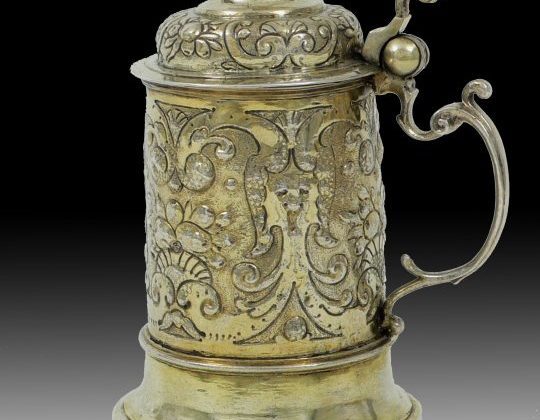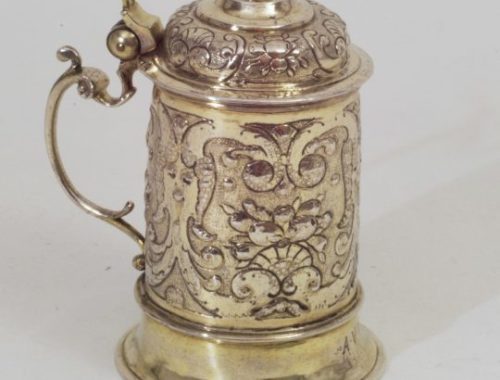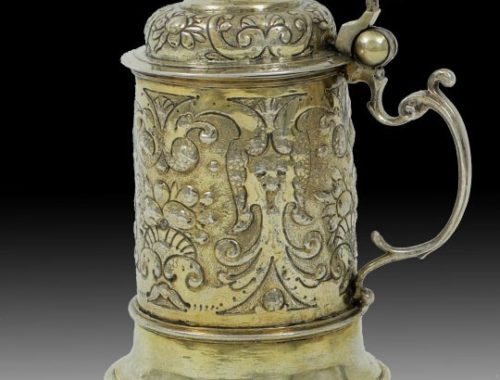Object Number: #112
Augsburg 1649/53
Maker: Jeremias Güntz
City’s hallmark: a Pyr for Augsburg, 1649/53 (Seling 2007, Nr. 0570).
Maker’s mark: Monogram „IG“ in a round shield for Jeremias Güntz (Seling 2007, Nr. 1543)
„Tremulierstich“ (assay control of silver content)
Height: 18 cm (7, 08 in.); weight: 560 gr.
Detailed Information
This present tankard with a cover is a luxurious drinking vessel for beer, and a fine example of early Baroque from Augsburg. The cylindrical corpus is raised on a bright, concave and profiled standing ring and tapers to the upper side, creating a slightly conical. The loop handle on the one side of the tankard is cast and adorned with volutes. The walls of the corpus are embossed with plastic ornaments in auricular/baroque style on a punched background of masks, shells, dolphins and fruits. The vaulted and profiled cover is topped with a cast finial, which is connected to the corpus by a hinge and has a split thumb-rest. The décor of the ocver is correlates to that of the corpus.
Tankards as a drinking vessel are an invention of the renaissance. The bourgeoisie used them mostly for drinking beer. The geographic extent of its use is limited to Germany, England and Scandinavia. Tankards were made long into the eighteenth century, though beer glasses gradually replaced them. At this point silver tankards became increasingly limited and and highly luxurious object.
The type of the tankard which tapers on the upper side was most commonly developed in South-Germany. Augsburg, a famous city of goldsmiths, also presented a high number of tankards, which with their amusing décor – similar to the one of the present tankard – emphasise the light mood of beer drinking.
Maker: Jeremias Güntz, Protestant, was born in Leipzig. In 1647, he was candidate for the acquisition of the right of being a master goldsmith in Augsburg and in 1648 he got married to Anna Maria Roll. He died in 1686.
Some of the works of Jeremias Güntz are in private collections, such as the collection of the Esterházy Palace, Austria.
Literature:
Seling, Helmut, Die Augsburger Gold- und Silberschmiede 1529-1868, Bd. I-III, München: Beck Verlag, 1980-2007




